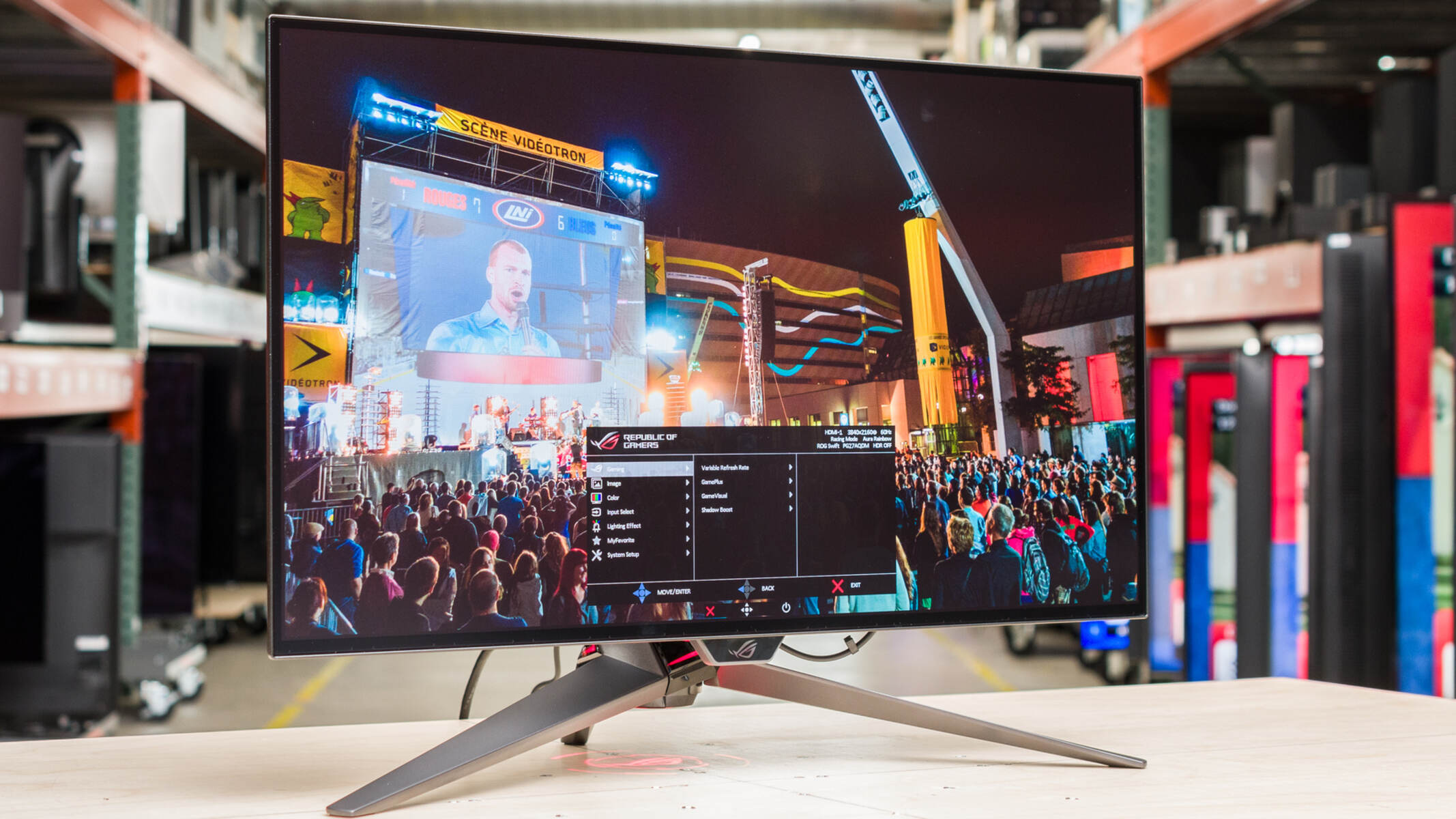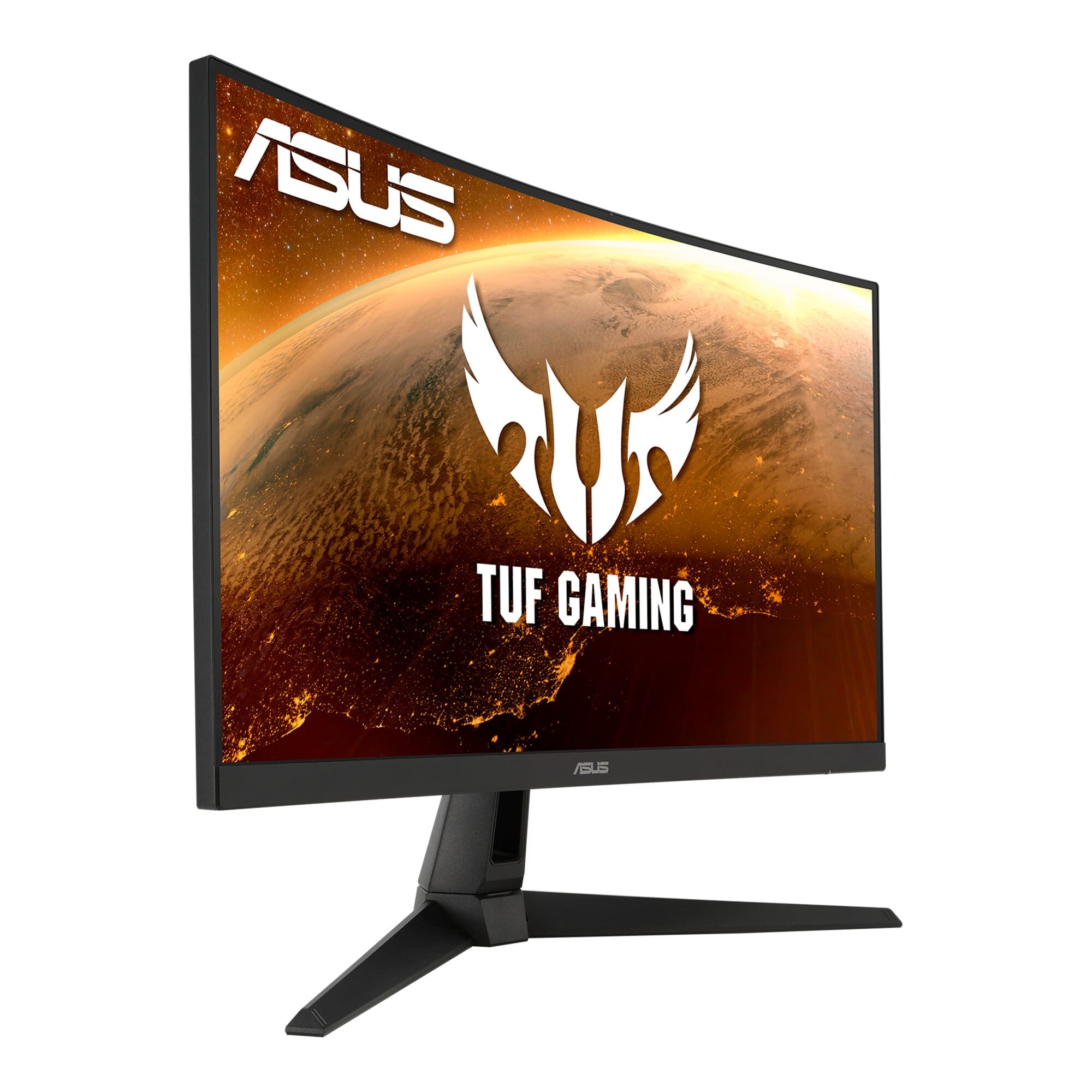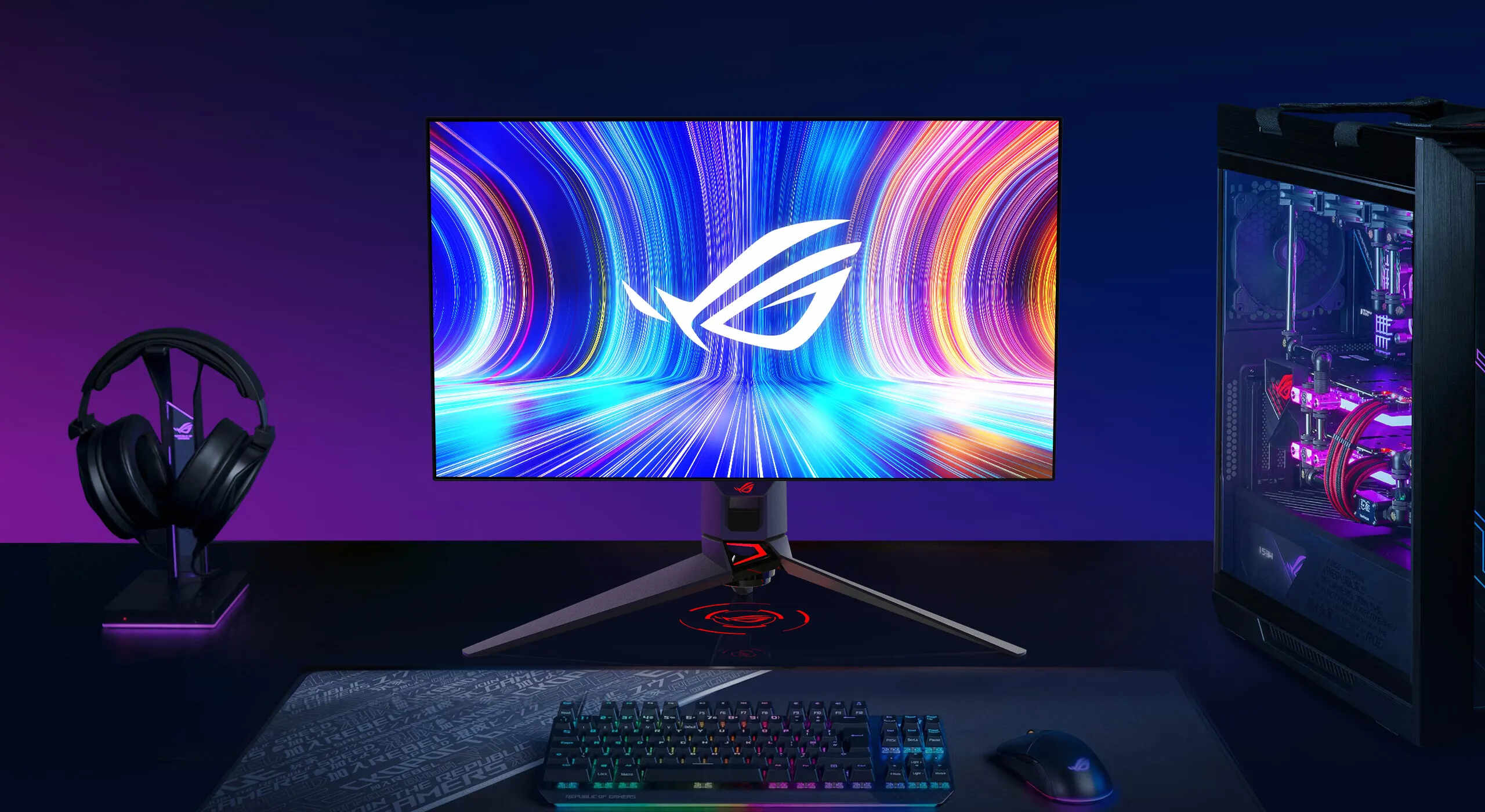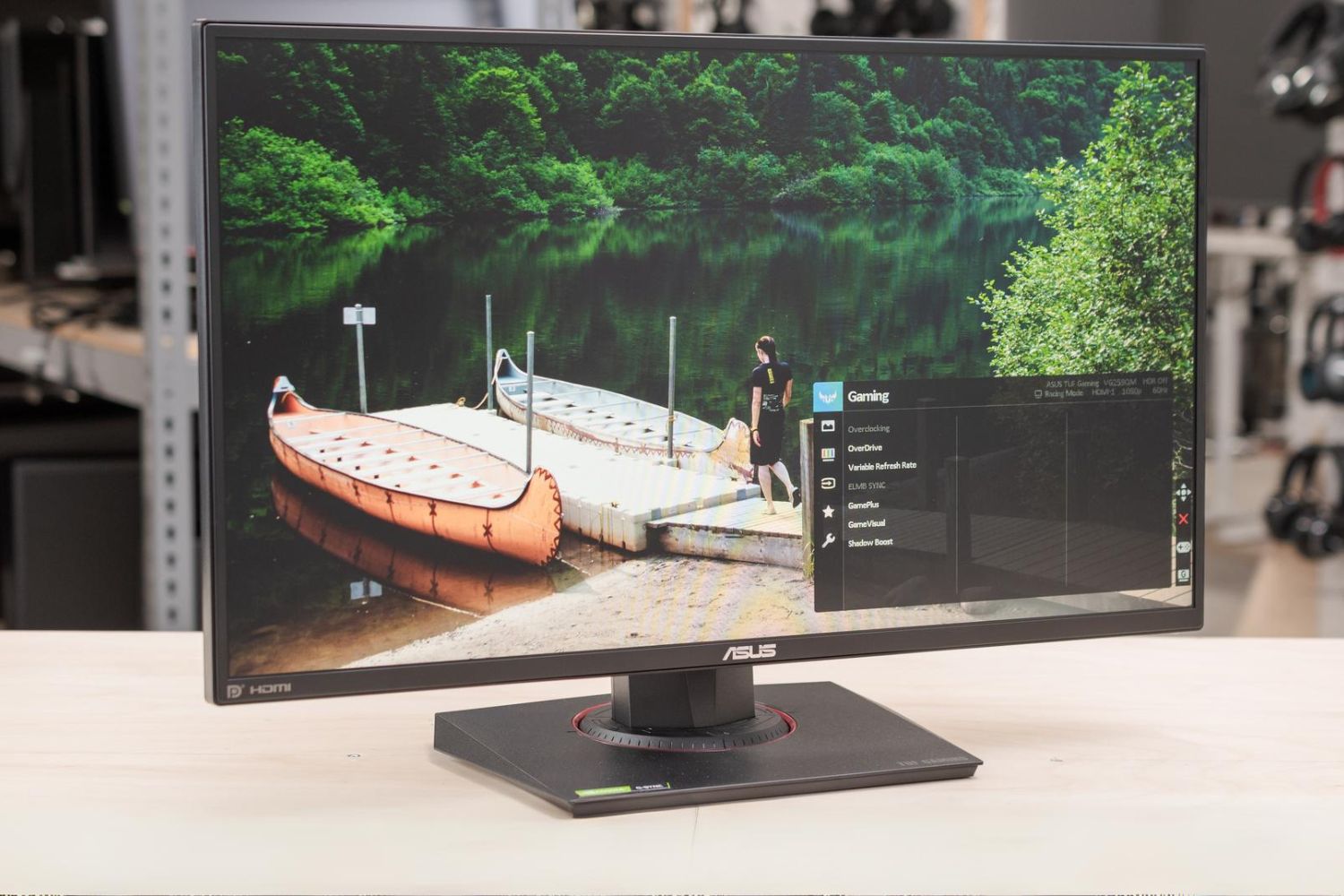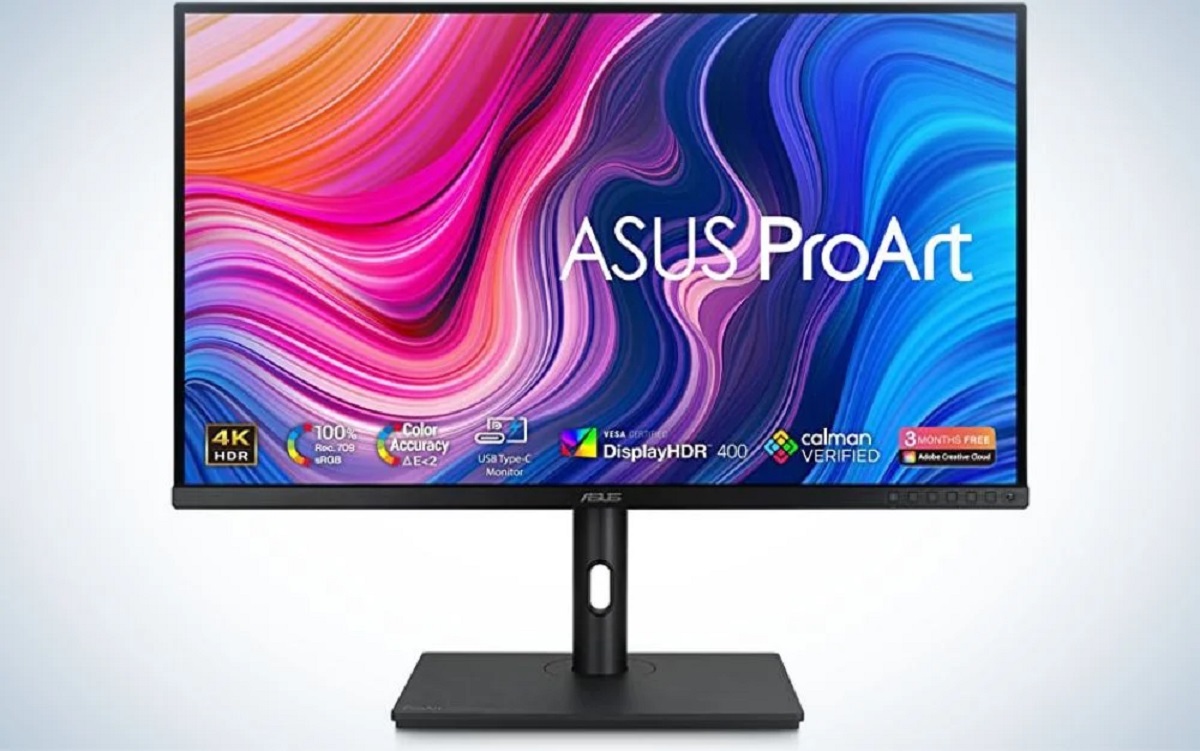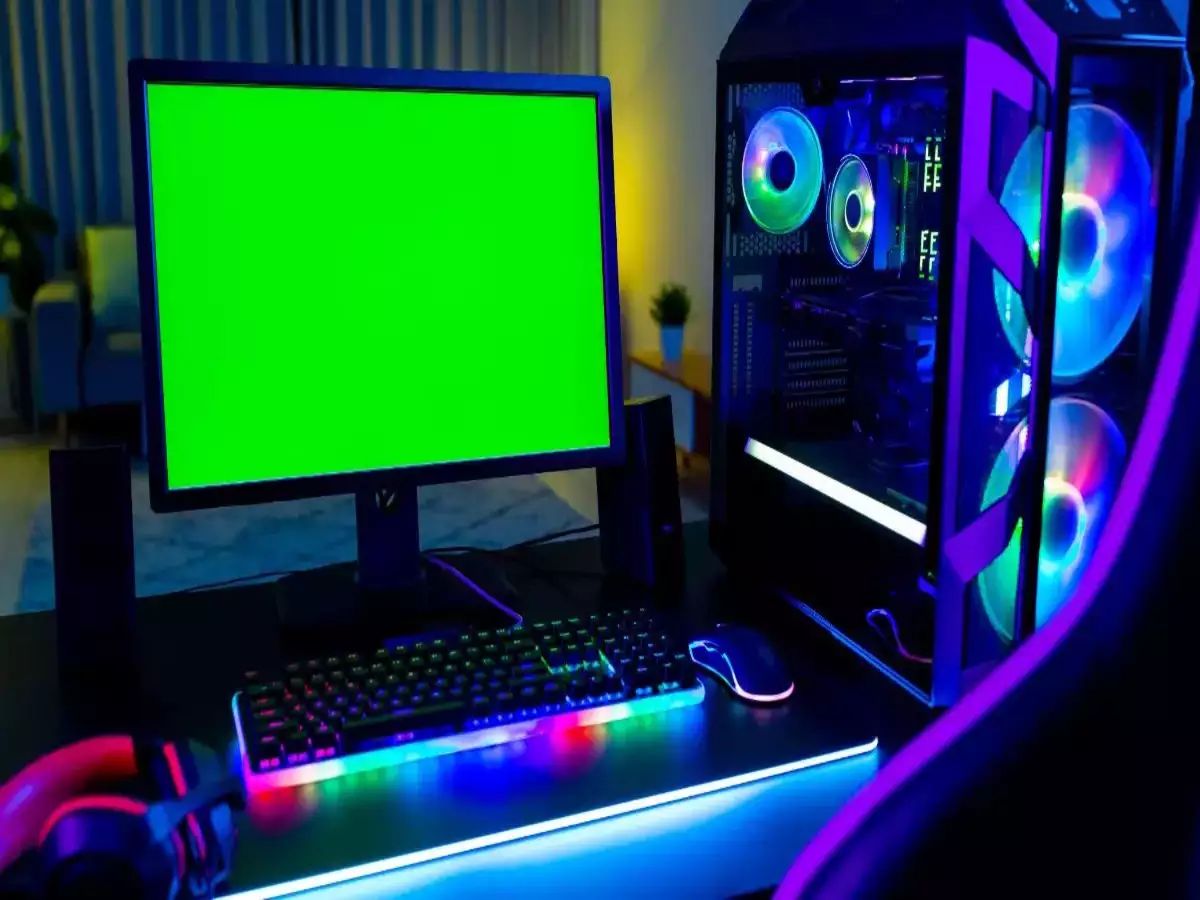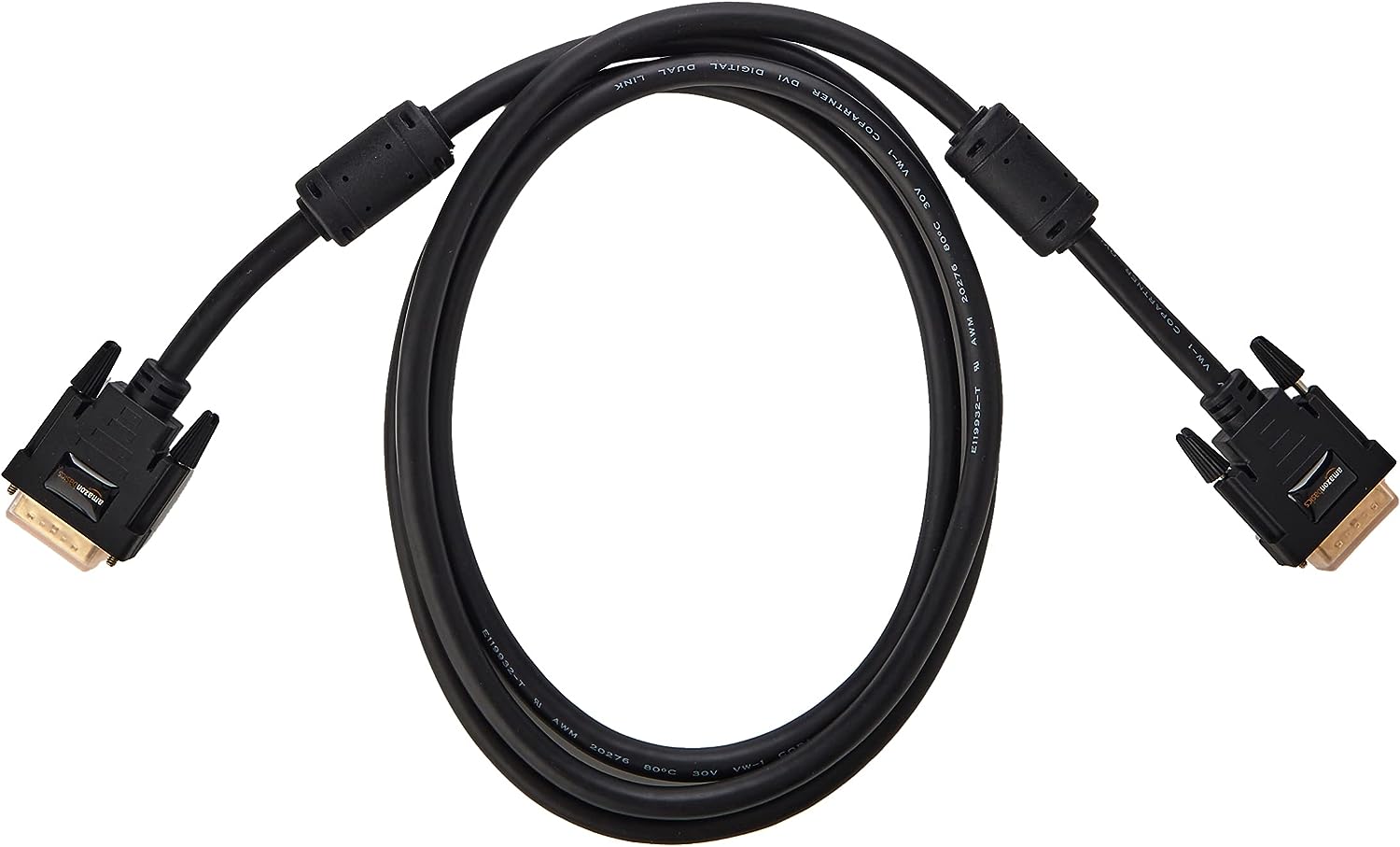Introduction
When it comes to gaming monitors, the ASUS VG278Hv 27-Inch Full HD 1920X1080 is a popular choice among gamers. With its impressive specs and vibrant display, it’s no wonder why many gamers opt for this monitor. However, if you find that your ASUS VG278Hv is displaying heavy red pigments, it can be a cause for concern. Red hues dominating the color palette can distort the visuals and impact your gaming experience.
Understanding why your ASUS VG278Hv has heavy red pigments is crucial in order to find a solution. There are several factors that may contribute to this issue, ranging from monitor settings to hardware problems. By diving into the different possibilities, you can troubleshoot the issue and restore the accurate color representation on your gaming monitor.
In this article, we will explore the common causes and potential solutions to address heavy red pigments on your ASUS VG278Hv gaming monitor. We will guide you through the steps to adjust the monitor settings, troubleshoot the graphics card, and check for software updates. Additionally, we will provide tips on testing the hardware and how to reach out to ASUS support for further assistance if needed.
Understanding the Basics of Color Calibration
Color calibration is the process of adjusting the colors displayed on your monitor to ensure accurate and consistent color reproduction. Proper color calibration is essential for a satisfying visual experience, whether you are gaming, editing photos, or watching videos. Understanding the basics of color calibration can help you troubleshoot and resolve issues like heavy red pigments on the ASUS VG278Hv gaming monitor.
The primary goal of color calibration is to achieve color accuracy by aligning your monitor’s display with a standard color space, such as sRGB or Adobe RGB. This ensures that the colors you see on your monitor are as close as possible to the intended colors of the content you are viewing.
There are a few key factors that can impact color accuracy on your monitor:
- Monitor Settings: Incorrect monitor settings, such as brightness, contrast, gamma, and color temperature, can lead to color imbalances. These settings can be adjusted directly on the monitor or through software.
- Graphics Card Settings: The graphics card in your computer plays a crucial role in rendering the visuals on your monitor. Incorrect graphics card settings or outdated drivers may result in color inaccuracies.
- Software and Updates: Issues with software, such as outdated applications or incompatible color profiles, can affect color reproduction. Keeping your software up to date is important to ensure optimal performance.
- HDMI or DisplayPort Connection: Sometimes, a loose or faulty HDMI or DisplayPort connection can cause color distortion. Checking and reconnecting the cables can help resolve this issue.
By understanding these factors, you can begin troubleshooting heavy red pigments on your ASUS VG278Hv gaming monitor. In the following sections, we will cover each of these potential causes in more detail and provide steps to address them. Remember, color calibration is an ongoing process, and regularly checking and adjusting your monitor settings can help maintain accurate colors over time.
Possible Causes for Heavy Red Pigments
If your ASUS VG278Hv gaming monitor is displaying heavy red pigments, there could be several potential causes. Understanding these causes will help you pinpoint the source of the issue and take appropriate action. Here are some possibilities to consider:
- Monitor Settings: Incorrect monitor settings can lead to color imbalances. Check the brightness, contrast, and gamma settings on your monitor. If these settings are too high, it can result in an exaggerated red tint. Adjusting these settings to more balanced levels can help alleviate the issue.
- Color Temperature: The color temperature setting determines the overall warmth or coolness of the colors on your monitor. If the color temperature is set too high, it can cause a dominant red hue. Try adjusting the color temperature to a cooler setting to see if it improves the color balance.
- Graphics Card Issues: Outdated graphics card drivers or incorrect graphics card settings can also affect color reproduction. Make sure your graphics card drivers are up to date, and check the color settings in your graphics card control panel. Restoring default settings or adjusting the color saturation can help resolve color balance issues.
- Software Updates: In some cases, software updates can introduce compatibility issues that affect color calibration. Check for any updates to your operating system, graphics card drivers, and color calibration software. Installing the latest updates may resolve the issue.
- HDMI or DisplayPort Connection: A loose or faulty HDMI or DisplayPort connection can disrupt the transmission of colors, resulting in color inconsistencies. Ensure that the cables are securely connected and that there are no visible damages. Consider using different cables or ports to rule out any connection issues.
By considering these possible causes, you can narrow down the reasons behind the heavy red pigments on your ASUS VG278Hv gaming monitor. In the following sections, we will guide you through the steps to address each of these potential causes and restore the accurate color representation on your monitor.
Double-Checking the Monitor Settings
One of the first steps you should take when dealing with heavy red pigments on your ASUS VG278Hv gaming monitor is to double-check the monitor settings. Sometimes, incorrect settings can lead to color imbalances and an overpowering red tint. By ensuring that the monitor settings are properly configured, you may be able to resolve the issue. Here’s what you can do:
- Brightness and Contrast: Check the brightness and contrast settings on your monitor. If these settings are too high, it can result in an exaggerated red hue. Adjust the brightness and contrast to more balanced levels. Generally, a brightness setting around 80-100 and a contrast setting around 50-70 is recommended, but you can experiment with these values to find the optimal balance for your preferences.
- Gamma: The gamma setting determines how the brightness levels of the monitor are distributed. Incorrect gamma settings can affect color reproduction. Adjust the gamma setting to the default level or experiment with different gamma values to see if it improves the color balance.
- Color Temperature: The color temperature setting can significantly impact the overall color representation on your monitor. If the color temperature is set too high, it can cause a dominant red hue. Access the color temperature settings and try adjusting it to a cooler setting. This may help in reducing the intensity of the red pigments.
It’s important to note that monitor settings can vary depending on personal preference and ambient lighting conditions. Therefore, these recommended settings can serve as a starting point, and you can fine-tune them according to your visual preferences. Additionally, some monitors provide preset color modes, such as “sRGB” or “Standard,” which are designed to deliver accurate colors. You might consider selecting these modes for a more accurate color representation.
After making changes to the monitor settings, take some time to observe whether the heavy red pigments have decreased. Remember to allow the monitor to adjust to the new settings. If the issue still persists, proceed to the next troubleshooting steps to further investigate the potential causes and solutions.
Adjusting the Color Temperature
When dealing with heavy red pigments on your ASUS VG278Hv gaming monitor, one potential solution is to adjust the color temperature. The color temperature setting determines the overall warmth or coolness of the colors displayed on your monitor. By tweaking this setting, you may be able to reduce the dominance of the red hue. Here’s how you can adjust the color temperature:
- Access the OSD Menu: On the ASUS VG278Hv gaming monitor, press the menu button located on the front or side of the monitor to access the On-Screen Display (OSD) menu.
- Navigate to Color Settings: Using the navigation buttons on the monitor or the OSD menu, navigate to the color settings section. This is where you can adjust various color-related settings, including the color temperature.
- Choose a Cooler Color Temperature: Look for the color temperature options and select a cooler setting. Cooler color temperatures tend to have a bluish tint, which can help counterbalance the heavy red pigments. Common options may include “Cool,” “6500K,” or “D65.” However, monitors can vary in terms of available settings, so refer to your monitor’s manual for specific instructions.
- Observe and Adjust: After applying the new color temperature setting, take some time to observe the color representation on your monitor. Allow your eyes to adjust to the new settings. If the red pigments are still prominent, consider experimenting with different color temperature settings to find the one that suits your preferences.
Remember that adjusting the color temperature is a personal preference, and there is no one-size-fits-all solution. Different lighting conditions and individual visual preferences may require different color temperature settings. Therefore, you may need to experiment with various settings until you find the one that provides the most balanced and accurate color reproduction for your gaming experience.
In some cases, adjusting the color temperature alone may not fully resolve the issue of heavy red pigments. If that is the case, continue to the next sections for further troubleshooting steps to identify and address other potential causes of the color imbalance.
The Role of the Graphics Card
When it comes to color reproduction on your ASUS VG278Hv gaming monitor, the graphics card in your computer plays a crucial role. The graphics card is responsible for rendering the visuals and transmitting them to your monitor. If there are issues with the graphics card settings or drivers, it can affect color accuracy and contribute to heavy red pigments. Here’s how you can troubleshoot the graphics card:
- Update Graphics Card Drivers: Outdated or incompatible graphics card drivers can cause color imbalances. Visit the website of the graphics card manufacturer (such as NVIDIA or AMD) and download the latest drivers for your specific graphics card model. Install the updated drivers and restart your computer. This can often resolve issues related to color accuracy.
- Restore Graphics Card Settings: If you have previously made changes to the graphics card settings, it’s worth restoring them to their default values. Open the graphics card control panel, such as NVIDIA Control Panel or AMD Radeon Settings, and look for an option to restore default settings. Apply the changes and see if it improves the color representation on your monitor.
- Adjust Color Saturation: Some graphics card control panels allow you to adjust the color saturation. If the red pigments are still prominent even after adjusting the monitor settings, reducing the color saturation in the graphics card control panel can help. Experiment with lowering the color saturation and see if it brings the colors back into balance.
Remember to restart your computer after making any changes to the graphics card settings or drivers. This ensures that the changes take effect and allows the system to recalibrate the color settings.
In addition to updating drivers and adjusting settings, it is important to ensure that your graphics card is compatible with your monitor. Check the manufacturer’s specifications and ensure that your graphics card supports the resolution and refresh rate of your ASUS VG278Hv gaming monitor. Mismatched settings can result in color discrepancies.
If you have tried troubleshooting the graphics card and the issue of heavy red pigments persists, move on to the next steps to investigate other potential causes and solutions.
Software Issues and Updates
Software-related issues can also contribute to heavy red pigments on your ASUS VG278Hv gaming monitor. Outdated software, incompatible color profiles, or other software conflicts can affect color calibration. Here are some steps to address software-related problems:
- Update Operating System: Ensure that your operating system is up to date. Software updates often include bug fixes and improvements that can help resolve color-related issues. Check for updates in your computer’s settings or control panel and install any available updates.
- Update Graphics Card Drivers: As mentioned earlier, updating your graphics card drivers is important not only for addressing hardware-related issues but also for resolving software-related color imbalances. Make sure you have installed the latest drivers for your graphics card as provided by the manufacturer.
- Color Calibration Software: If you are using color calibration software or third-party applications to manage color profiles, ensure that they are compatible with your monitor and the latest version is installed. Outdated or incompatible color calibration software can lead to color inaccuracies. Check for updates and install them if available.
- Disable Color Enhancements: Some software or graphics card settings may have color enhancement features that can override the monitor’s color calibration. These enhancements, such as digital vibrance or color saturation, can exaggerate certain color tones. Disable any color enhancement features in your software settings or graphics card control panel.
By keeping your software up to date and ensuring compatibility between your operating system, graphics card drivers, and color calibration tools, you can minimize the chances of software-related color imbalances on your ASUS VG278Hv gaming monitor.
If the heavy red pigments persist even after addressing software-related issues, proceed to the next troubleshooting steps to check the physical connections and investigate whether it is a hardware-related problem.
Checking the HDMI or DisplayPort Connection
A loose or faulty HDMI or DisplayPort connection can potentially cause color distortion and contribute to heavy red pigments on your ASUS VG278Hv gaming monitor. Ensuring that the connection is secure and functioning properly is an important troubleshooting step. Here’s what you can do to check the HDMI or DisplayPort connection:
- Inspect the Cable: Examine the HDMI or DisplayPort cable connected to your monitor. Look for any visible damages such as bent or broken pins, frayed wires, or loose connectors. If you notice any issues, replace the cable with a new one.
- Disconnect and Reconnect: Disconnect the HDMI or DisplayPort cable from both the monitor and the computer. Ensure that the connectors are clean and free from dust or debris. Then, firmly reconnect the cable to both ends, making sure it is fully inserted and secure in the ports.
- Try a Different Cable or Port: If possible, try using a different HDMI or DisplayPort cable to rule out any issues with the current cable. Additionally, if your monitor has multiple HDMI or DisplayPort ports, try connecting the cable to a different port to see if the problem persists. This can help determine if the issue is related to a specific port or cable.
After checking and reestablishing the HDMI or DisplayPort connection, observe your monitor to see if the heavy red pigments have diminished. Allow some time for the monitor to adjust to the reconnected connection. If the issue is still present, proceed to the next troubleshooting steps to further investigate potential hardware-related causes.
It’s worth noting that apart from the physical connection, the HDMI or DisplayPort settings on your computer may also affect color reproduction. Ensure that the correct input source and proper resolution settings are selected in the display settings of your computer’s operating system.
If none of these steps have resolved the issue, continue to the next section, which focuses on investigating whether the problem is due to a hardware malfunction.
Is it a Hardware Problem?
If you have tried adjusting the monitor settings, troubleshooting the graphics card, and checking the HDMI or DisplayPort connection without success, it’s important to consider whether the issue of heavy red pigments on your ASUS VG278Hv gaming monitor could be a result of a hardware problem. Here are a few steps to help you determine if it’s a hardware issue:
- Test the Monitor on a Different System: Connect your ASUS VG278Hv gaming monitor to a different computer or gaming console if possible. Use a different HDMI or DisplayPort cable to establish the connection. If the heavy red pigments are still present on the different system, it suggests that the issue is likely with the monitor itself.
- Test a Different Monitor: Connect a different monitor to your computer or gaming console using the same HDMI or DisplayPort cable. If the colors appear accurate on the other monitor, it indicates that the issue is specific to your ASUS VG278Hv gaming monitor.
- Perform a Factory Reset: Some monitors have a factory reset option in the OSD menu. Performing a factory reset will revert all settings to their default values, potentially resolving any software or configuration-related issues. Refer to the monitor’s manual for instructions on how to perform a factory reset.
- Consult a Professional: If none of the above steps have resolved the issue, it may be necessary to consult a professional technician or contact ASUS support. They may be able to diagnose and repair any hardware-related problems or provide further guidance and assistance.
Keep in mind that hardware issues can be complex and may require expert assistance. It’s important to follow proper troubleshooting steps and seek professional support, especially if your ASUS VG278Hv gaming monitor is still under warranty.
By going through these steps, you will be able to determine whether the heavy red pigments are caused by a hardware problem. If so, you can take appropriate action to resolve the issue and restore accurate color representation on your monitor.
Contacting ASUS Support
If you have exhausted all troubleshooting steps and the issue of heavy red pigments on your ASUS VG278Hv gaming monitor persists, it’s time to reach out to ASUS support for further assistance. ASUS provides dedicated customer support to help resolve technical issues and provide guidance. Here are the recommended steps for contacting ASUS support:
- Visit the ASUS Support Website: Head over to the official ASUS support website. Navigate to the appropriate section for your region or country.
- Locate the Support Contact Information: Look for the support contact information, such as phone numbers or email addresses, provided on the website. ASUS often offers multiple channels to contact their support team, so choose the option that suits you best.
- Prepare the Necessary Information: Before contacting ASUS support, gather all relevant details about your ASUS VG278Hv gaming monitor. This includes the model number, serial number, purchase date, and a clear description of the issue you are experiencing. Having this information readily available will help the support team understand and address your problem more efficiently.
- Reach Out to ASUS Support: Use the provided contact information to get in touch with ASUS support. Be prepared to explain the troubleshooting steps you have already taken and provide the requested information about your monitor. The support team will guide you through further troubleshooting or provide instructions for a potential repair or replacement.
When contacting ASUS support, it’s important to remain patient and polite. Describe your issue in a clear and concise manner, and follow any instructions or guidance provided by the support representative. They are there to assist you and find a resolution to the problem.
Remember to retain any necessary documentation, such as support ticket numbers or case references, for future reference. This can help expedite the support process and ensure clear communication.
By contacting ASUS support, you will have access to expert assistance and potentially find a solution to the persistent issue of heavy red pigments on your ASUS VG278Hv gaming monitor.
Conclusion
Dealing with heavy red pigments on your ASUS VG278Hv gaming monitor can be frustrating, but with the right troubleshooting steps, you can potentially resolve the issue and restore accurate color representation. By understanding the basics of color calibration, checking the monitor settings, adjusting the color temperature, troubleshooting the graphics card and software, and examining the HDMI or DisplayPort connection, you can address various potential causes of the problem.
If the issue persists even after thorough troubleshooting, it’s important to consider whether it is a hardware problem. Testing the monitor on a different system or trying a different monitor on your system can help determine if the issue lies with the hardware. In such cases, contacting ASUS support for professional assistance is recommended. They can provide further guidance, help diagnose hardware-related issues, and offer potential solutions or repairs.
Remember, the key to resolving the issue of heavy red pigments is a systematic and patient approach. Taking the time to troubleshoot and follow the steps outlined in this article will help you identify the cause of the problem and take appropriate action.
Lastly, it’s important to note that each gaming monitor may have its own unique settings and troubleshooting steps. Always refer to the manufacturer’s documentation and support resources for specific instructions tailored to your ASUS VG278Hv gaming monitor.







